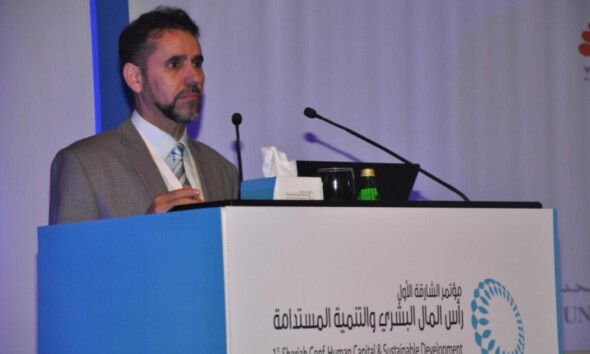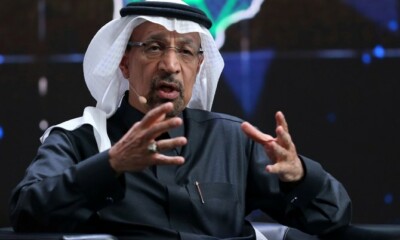Home » Business » Arab Nations have Enormous Potential for Green Hydrogen and Ammonia Investments
Business
Arab Nations have Enormous Potential for Green Hydrogen and Ammonia Investments
Published
2 years agoon
By
Huda Az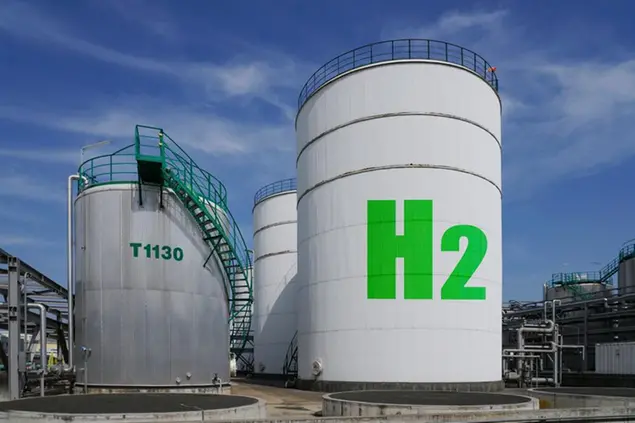
The Arab region is well-suited for hydrogen production, with abundant sunshine, vast winds, and proximity to major markets in Asia and Europe
Several Arab countries have recently invested in green hydrogen initiatives as a clean energy source, moving away from fossil fuels that contribute to the global climate crisis. These efforts aim to align with the international pursuit of clean and renewable energy to meet the goals of the Paris Agreement.
The Arab region is a good place to produce hydrogen, with abundant sunshine, vast winds, and proximity to major markets in Asia and Europe.
This push for green hydrogen coincides with the region hosting the largest climate event for two consecutive years. In 2022, Egypt hosted the Conference of the Parties of the United Nations Framework Convention on Climate Change – UNFCCC (COP 27), and this year, the UAE will host COP 28, placing environmental topics at the forefront of the region’s economic and political agendas.
Daily News Egypt interviewed Hesham Eissa, a board member of the DCARBON Global consultancy firm and former Egyptian focal point in UNFCCC, to discuss Arab investments in green hydrogen and the region’s potential to become an energy hub in this field.
What are the biggest Arab investors in green hydrogen?
The green hydrogen industry is still in its early stages, and there may not be much information available on the biggest Arab investors in green hydrogen. However, green hydrogen technologies are attracting interest from several Arab nations for clean energy production and carbon emission reduction.
Here are a few notable Arab countries that have shown interest in green hydrogen and have the potential to become significant investors in the field:
- Saudi Arabia: The Saudi Arabian government has announced plans to invest in green hydrogen production as part of its long-term energy strategy. The country’s vast renewable energy resources, including significant solar potential, make it a promising location for green hydrogen projects.
- United Arab Emirates: The UAE is known for its investments in renewable energy, particularly in solar power. The country has expressed interest in green hydrogen and is exploring various projects and partnerships to develop its hydrogen economy.
- Qatar: The country, a top global producer and exporter of natural gas, is actively exploring green hydrogen production from renewable sources like solar and wind, alongside carbon capture in natural gas reforming.
- Kuwait: The emirate has been considering investments in renewable energy and has expressed interest in green hydrogen as a potential solution for reducing its carbon footprint. The government has plans to diversify its energy sources and explore opportunities in hydrogen production.
- Oman: It has been actively exploring green hydrogen projects and aims to develop a significant hydrogen economy. The country has partnered with international companies to develop hydrogen production facilities and has expressed its commitment to renewable energy and hydrogen technology.
- Bahrain: It has been focusing on renewable energy and exploring the potential of green hydrogen. The Bahrain Petroleum Company (Bapco) has shown interest in investing in green hydrogen projects.
Arab nations’ potential to invest in green hydrogen and ammonia
The Arab nations have significant potential to invest in green hydrogen and ammonia due to several factors.
These include the abundant renewable energy resources. The Arab nations possess vast renewable energy resources, particularly solar and wind power. These resources provide a sustainable and abundant source of electricity that can be utilized to produce green hydrogen and ammonia through electrolysis.
Also, Arab nations have a strategic advantage in renewable energy generation due to their vast deserts, strong winds, and sunny climates. However, severe climatic conditions, such as dust storms, may affect the efficiency of solar energy generators, potentially hindering large-scale projects.
Moreover, Arab regions are recognizing the importance of diversifying their economies beyond traditional fossil fuel industries, investing in green hydrogen and ammonia to reduce dependence on hydrocarbons and transition to a low-carbon economy. Despite this, fossil fuel sources remain a significant source of national income, which will be reliant on for extended periods.
Also, the potential for export since Arab nations have the potential to become major exporters of green hydrogen and ammonia. These energy carriers can be transported to energy-importing countries, supporting their efforts to decarbonize sectors such as transportation, industry, and power generation.
Regional cooperation in green hydrogen and ammonia projects can enhance the viability and competitiveness of these technologies. Infrastructure development, research, and investment may lead to cost-sharing, information exchange, and economies of scale. The United Arab Emirates is investing in establishing green hydrogen production plants in Egypt.
Finally, the economic opportunities offered. Investing in green hydrogen and ammonia can create new job opportunities and attract investments in related industries. It can also stimulate local manufacturing and supply chain development, fostering economic growth and technological advancement.
Besides the environmental benefits, what are the economic outcomes for the Arab region?
It is necessary at the outset to address the environmental benefits, especially at the level of reducing air pollution loads on the one hand, to achieve great environmental and social returns, such as reducing chest diseases, but also at the level of reducing emissions and implementing the emissions reduction commitments contained in the NDC on the other hand.
Also, investing in green hydrogen energy can lead to job creation, economic diversification, and increased export potential in renewable energy resources like solar and wind. Arab region can position themselves as major exporters of clean energy, tapping into the growing global demand for green hydrogen. By investing in green hydrogen infrastructure and production capabilities, they can establish long-term export markets, potentially increasing revenue and trade balances, and potentially boosting their economic growth.
Is the emphasis and financing for green hydrogen shifting away from other critical climate solutions?
Here we must return to the priorities of climate action in the Arab region, which is that adapting to the negative effects of climate change is the priority due to the seriousness of the effects of climate change on Arab countries as well as the fragility of the environmental situation in this region. Indeed, this proposition is always a priority for the Arab negotiating teams in climate conferences. On the other hand, the contribution of Arab countries to the global emissions volume does not exceed 4 to 5% of the global emissions volume. Therefore, the objective of the participation of Arab countries in the issue of emissions reduction are cooperation with the international community. To save the planet from climate change and not historically responsible for this phenomenon.
Therefore, investing in green hydrogen originally achieves a developmental dimension that Arab countries need, as we explained previously, and contributes to achieving the goals of limiting the exacerbation of climate change. Furthermore, the growth of green hydrogen can have synergistic effects with other climate solutions. For instance, renewable energy sources like solar and wind power are often used to produce green hydrogen through electrolysis, thereby driving the development and deployment of these renewable technologies as well. In summary, while green hydrogen is attracting attention and investments, it is part of a broader set of climate solutions rather than diverting focus from other necessary approaches. The collective efforts and investments in multiple technologies and strategies are essential to tackle climate change effectively.
Impact of Green Hydrogen on the Global Energy Map
We know that the Arab countries, especially the Gulf countries, are the main source of fossil fuels in the world, and all countries of the world rely on them to provide energy. Therefore, given the international trend towards relying heavily on renewable energy, it will not change much from the leadership of the Arab countries in the global energy axis due to the availability of the same factors that were available. In fossil fuels, such as the presence and availability of financial investments, as well as the raw materials needed for clean production. Therefore, what changes is the type and nature of the product, but the producer remains in his position.
Therefore, the production map may not change, but the nature of production is what will change, especially considering the availability of technology and financing conditions. Also, the growth of clean energy production achieves some of the climate goals that countries have signed. Arabic has the goal of zero emissions, and achieving environmental sustainability.
So, the Energy Transition Leadership to green hydrogen can position the Arab region as a leader in the global energy transition. By actively promoting and adopting sustainable energy practices, the region can demonstrate its commitment to combating climate change and contribute to the achievement of global climate goals, such as those outlined in the Paris Agreement. This leadership role can enhance the region’s influence and strengthen its partnerships with other countries and international organizations.

The Qabul Platform: Higher Education That Is More Effective & Open
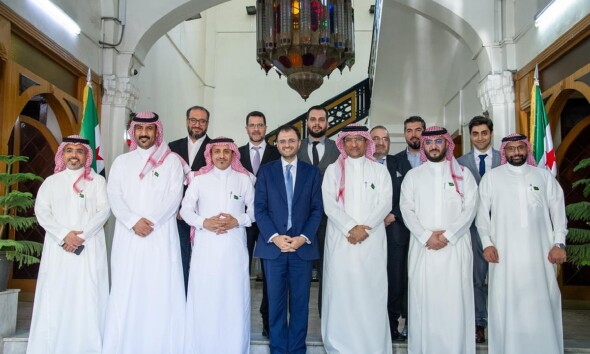
A Saudi-Syrian Accord: Anticipated Investments in Key Sectors

Saudi Tourism Introduces Summer 2025 Programme: ‘Colour Your Summer’
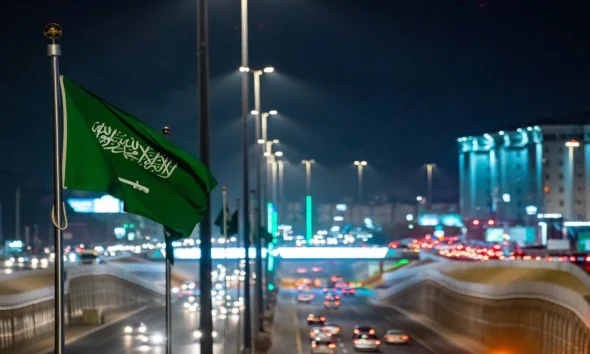
Madinah 2025: A Cultural Renewal & Finalising the KSA’s Vision
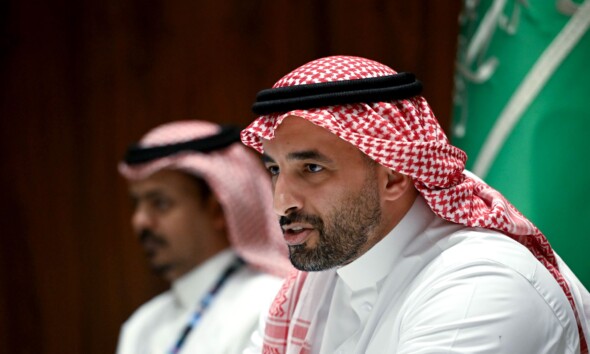
The Saudi Dr. Abdulaziz Al-Bassam: A National Leader with Global Insight
